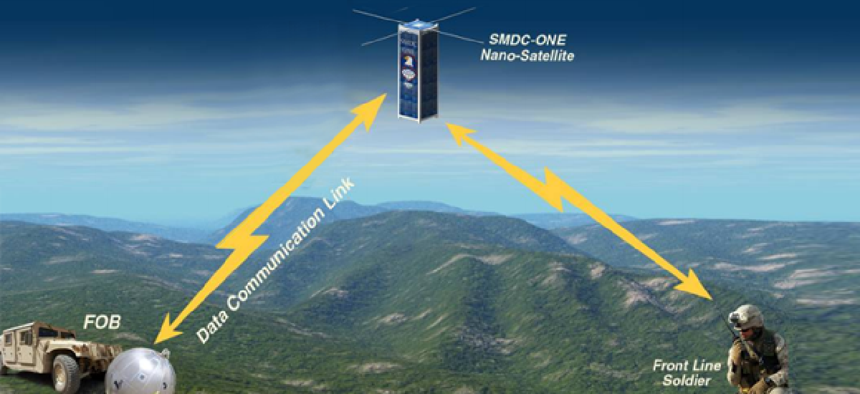Low-orbiting nanosatellite can act as ‘cellphone tower in space’

Nanosatellites in low-Earth orbit can boost communication coverage for troops in remote environments.
In an effort to bolster communications capabilities, the Army will deploy nanosatellites to get around problems associated with “over-the-hill” visibility in remote areas.
The first nanosatellite developed by Army Space and Missile Defense Command, called SMDC-ONE (for Orbital Nanosatellite Effect), is already in orbit. "It's basically a cellphone tower in space, except it's not for cellphones, it's for Army radios," said Travis Taylor, senior scientist for Space Division at SMDC.
Larger imaging satellites, which would still fall under the “nano” category, could join the SMDC-ONE and be able to identify a tank or a truck on Earth from orbit.
Military officials hope to deploy an entire constellation of these nanosatellites into orbit. “If we put five to 12 of these small satellites in orbit, it will cover most areas soldiers are operating, providing them real-time, all-the-time communications,” Taylor told the Army News Service.
By putting the nanosatellites in low-Earth orbit -- approximately 1,200 miles above Earth’s surface on the high end -- they will be able to provide soldiers in remote locations with radio access. Low-Earth orbit brings the nanosatellites approximately 60 times closer to the Earth than geosynchronous communication satellites, so they can relay weak signals from hand-held radios, according to a briefing given by Taylor in 2013.
And nanosatellites are not just for communications. They can be used to track environmental conditions, illegal logging or changes in the course of rivers, as well as space measurements including solar and cosmic radiation detection or interactions between magnetic fields, according to the Economist. They also provide greater accuracy in space weather reporting, which can protect far more expensive satellites and prevent astronauts from being exposed to high radiation doses. They enable real-time tracking for ships, which broadcast identification signals that can be picked up by nanosatellites flying in low-Earth orbit. According to the Economist, nanosatellites might even have been able to track Malaysian Airlines flight MH370, which mysteriously vanished in March.





